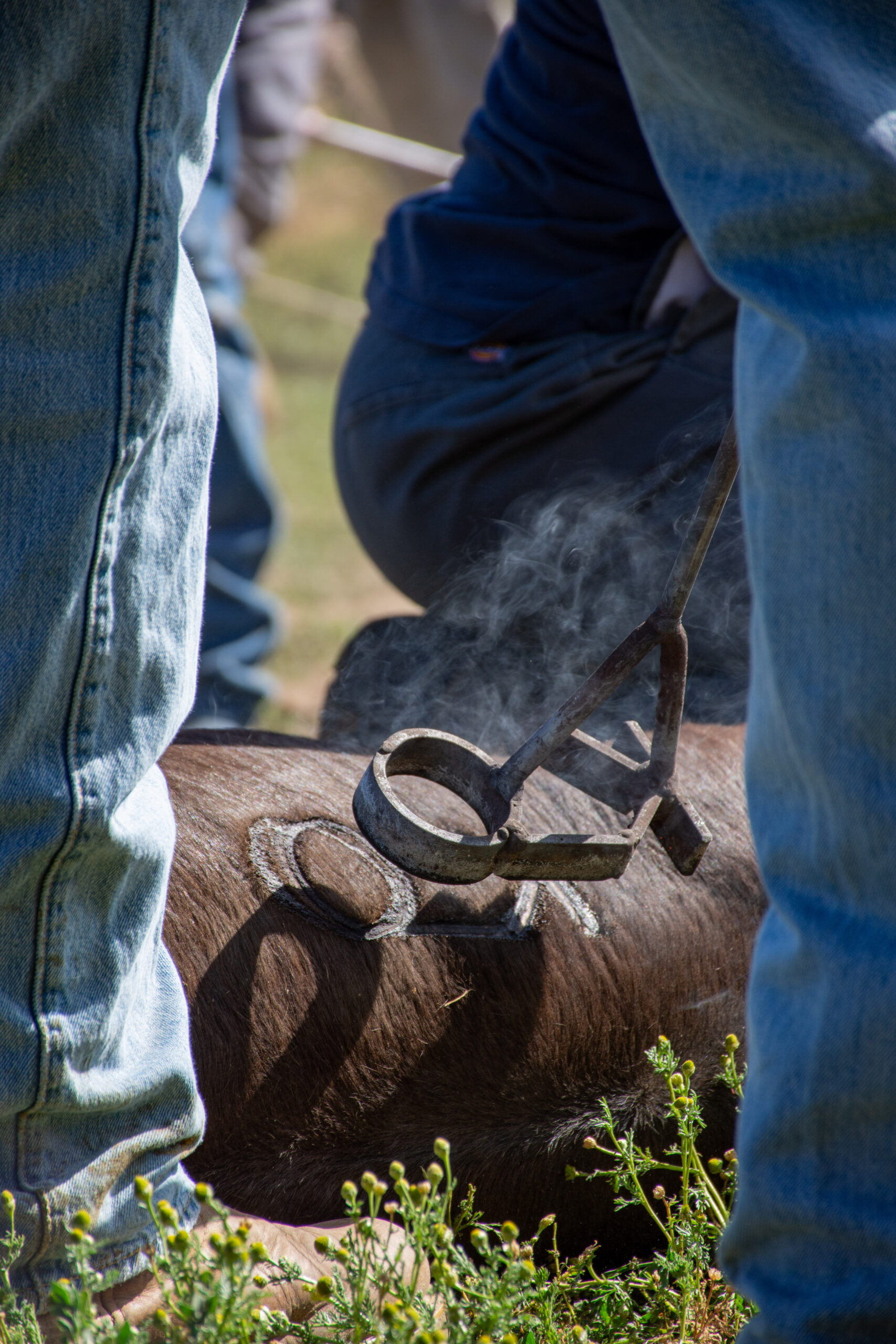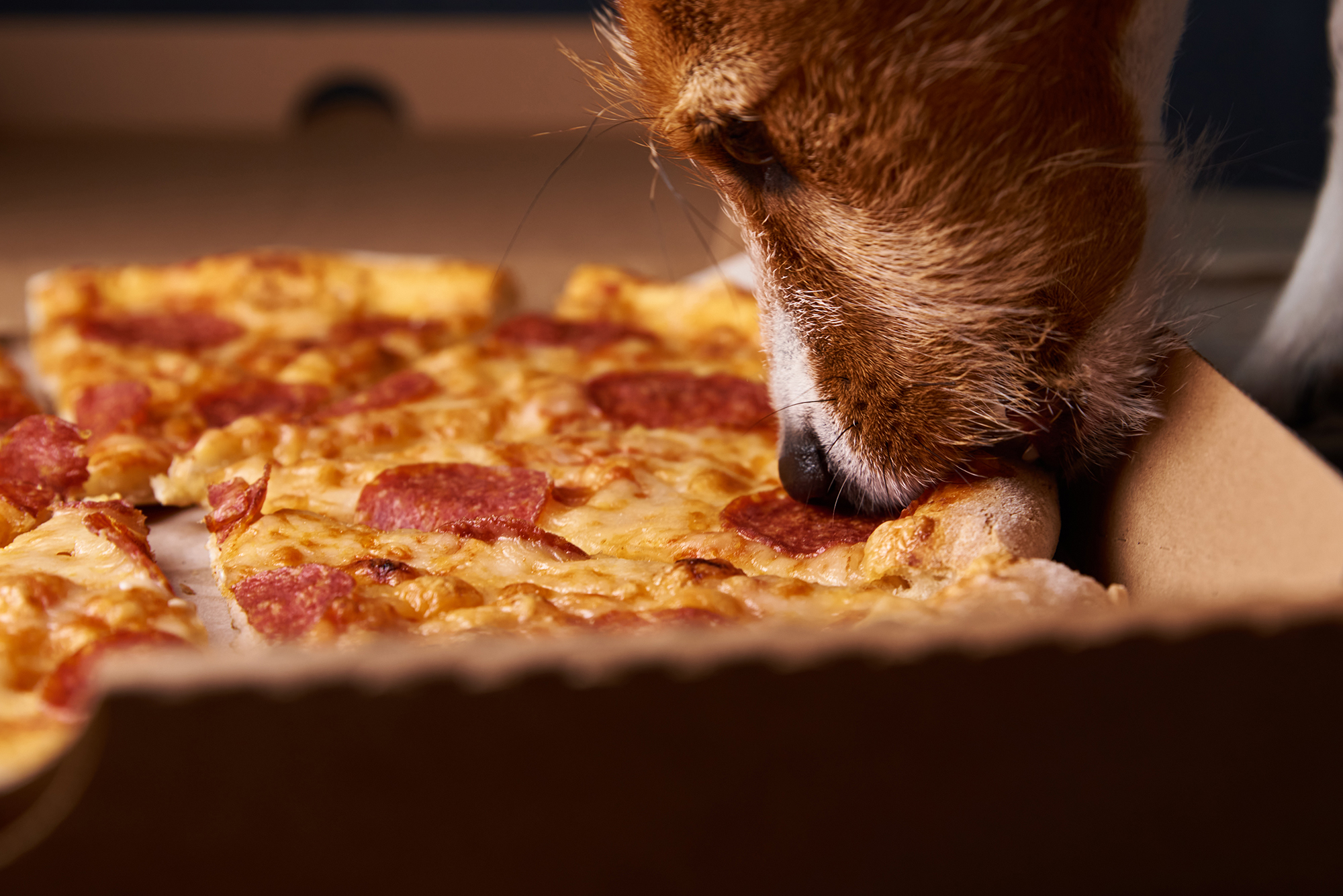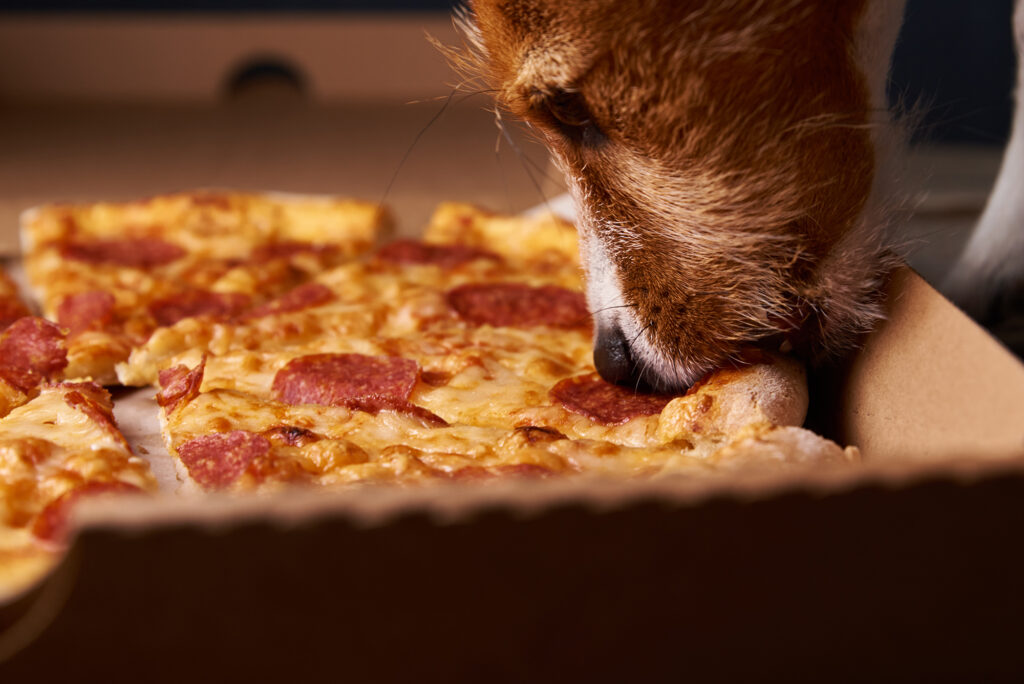Country Lifestyle
Keeping You Advised – Gary England

Long before the Thunder rumbled into Oklahoma, there was Gary England.
Whether or not you were born and raised in the Sooner State, there is a great chance you’ve heard of the famed weatherman. His skill and accuracy at predicting severe weather seemed at times omnipotent; more like a shaman than someone simply reading and reporting data.
Gary was, and still is, a household name in the Sooner state. Even if a person was more apt to turn to a different channel than KWTV News 9, the station he worked at for 41 years as the chief meteorologist, for entertainment, when it came to bad weather everyone wanted to hear what Gary had to say. The tagline “Stay with Channel 9 – We’ll keep you advised,” was as familiar to Oklahomans as the BC Clark jingle.
He became known for an off-beat sense of humor and a personality that’s genuinely country, peppering his weather reports with exclamations of “gosh”, “good gracious”, and “great God almighty!”
While people may familiar with his on-air persona, they likely do not know how his upbringing paved the way for his passion for weather or what a jokester he was as a young man, or how long he struggled unsuccessfully to find employment.
They also might not realize the depth of responsibility he felt for his fellow Oklahomans when severe weather struck, or the grief he feels remembering the bad days. “Everyone saw me on the television for all these years. They think I’m just some scientific guy; that I don’t have a past. They don’t realize I’m a normal person,” he shared.
Growing Up
Born in October 1939, Gary grew up in the northwestern Oklahoma town of Seiling. He was raised in a time when a television set was a luxury, so once each week, he and his family went to his grandmother’s house. There, with rapt attention, he’d watch legendary weatherman Harry Volkman.
“He was someone I really liked, and before all the fancy stuff. He had a 15 to 20 minute program on Sundays and I remember I would get right up to the TV, on my knees, to watch. One time when Harry came on, I pointed at him and said, ‘Daddy, I want to be one of those!’ My dad asked, ‘So what is he?’ I said, ‘I don’t know, but I want to be one,’” England recalled.
Winter weather was particularly exciting for the young man. “When Harry would forecast snow, I wouldn’t be able to sleep at night. I’d watch the yard light by the window. We didn’t have too much money, and my breath would freeze on the window on the inside, but I didn’t care. I was waiting for snow,” he said.
The town of Seiling only had one siren, and advance warning only came from deputies and other spotters. “During severe weather season, it seemed like if we went to the movies on a Saturday night, we’d hear the storm noise increase to our southwest, and they’d turn on the lights and talk about a tornado coming that way. Everyone would run out of that place, jump in the cars, go home, and jump in the cellars; all for a tornado that never came.” He added, “We always had those abrupt things. We had a lot of tornado warnings, but very few tornados.”
Once, while cleaning out a chicken house, Gary and his father were caught in a storm. “I got in the middle of the place, which wasn’t too smart, and Lord, it went on a long time. I looked outside and it was ripping the roof off. It looked like there were chicken bullets going by,” he recalled. He remembered that his father wondered if people were ever going to be able to get a warning for the storms.
Many times, Gary and his family took shelter in his grandmother’s cellar. Once it was only the kids and his grandmother at home. “I’ll never forget it. The sirens go off, and we ran down to the cellar. All we had was a little candle, and we piled in there, and there was a damn snake in there! Boy did we jump out. It was like a covey of quail flying out of there,” he said. “I had so many experiences when I was younger that would shape who I became.”
While most of his tales are amusing, including one of his grandfather and uncle refusing to go in the cellar and getting pelted by mud, a few were more sobering.
He recalled the day of the Woodward tornado in 1947. His family was living in Enid at the time, but he and his father walked outside and looked at the clouds. His father predicted, “It’s going to be a bad storm tonight somewhere.”
That storm, the deadliest in Oklahoma’s history, killed more than 100 people. All night long, the sounds of ambulances, fire trucks, and police cars flying towards Woodward kept residents awake. It wasn’t until the next day that the tragedy became public knowledge. “We moved back to Seiling right after that. There were a lot of men in Seiling that had helped Woodward people, and they had so many stories that, to a young boy, were so interesting. That influenced me a lot,” he said.
Also impacting Gary was a documentary television series called Victory at Sea, which detailed how the Navy helped win World War II. He loved the ships and the uniforms, and, one other factor of Navy life. “There would always be a couple sailors walking down the street with a girl in each arm,” he said with a chuckle. “I found out that it didn’t happen like that!” But somehow the combination of watching Harry Volkman and Victory at Sea created his future. “That’s all I could think about.”
That future began quickly. “I got out of school when I was 17. Not because I was overly smart, but because I started really early. Momma signed the papers, and I joined the Navy,” he said.
In the Navy, Gary went into the weather service. He said, “All the things I had been dreaming about all those years happened in the Navy.”
After his stint in the Navy, he spent a year at Southwestern Oklahoma State University in Weatherford, Okla., a choice that would shape the rest of his life. While there, he met “the cutest red-headed girl you’ve ever seen. Her name was Mary.”
At first Mary was less than impressed. Undeterred, he pursued her. He even resorted to throwing rocks at the second story window of her dormitory room to get her attention. Then he tried climbing up on a ladder and tapping on the window, still to no avail. Once, when he was using a friend’s shoulders as a ladder to reach the second floor, the campus police came by. “My friend ran out and left me hanging onto the ledge,” Gary shared. “I left pretty quickly after that.”
Eventually his tenacity paid off, and Mary and Gary were wed a year later. “I don’t know what I’d do if I hadn’t met her. It was the best thing that ever happened to me. She was trying to change me into the person she wanted me to be, and I didn’t even know it was happening,” he said. “She gradually changed my clothes, got my language under control, and I didn’t drink quite as much beer. She morphed me into the person she thought I should be, which was a lot better than I was.”
After Southwestern, Gary went to the University of Oklahoma, where he earned a mathematics/meteorology degree. He graduated in 1965, and because he’d already been in the Navy, he didn’t have to worry about being drafted to go to Vietnam.
Eager to pursue his dream of being a television weatherman, he sent letters to weather stations in Oklahoma and surrounding states. He received responses, but not the ones he wanted. “They’d send me a letter back to say they’d keep my letter ‘on file,’ which is code for, ‘Don’t contact us anymore.’” he shared.
In the meantime, Gary and a friend started a forecasting business for agriculture and aviation, setting up shop at the Wiley Post Airport. Unfortunately, the business did not flourish. “It wasn’t the smartest thing I’d done, but a great part of my life,” he said.
Once again, Gary sent out a round of letters across the country, this time asking for a job forecasting. “Only one person responded. His name was A.H. Glenn, and he was from New Orleans. Thank God he called. By that time Mary was pregnant with Molly, and I needed a job!”
In New Orleans, Gary spent his time forecasting oceanographic and meteorological conditions for Glenn’s private weather service. “It was a learning experience. He was the greatest teacher I’ve ever had in my life. Even though I didn’t’ like him, I learned so darn much from that guy. It was the first time I learned discipline, because he didn’t put up with any crap. If it hadn’t been for him, I would not have succeeded in life,” he shared. “He taught me about science I’d never dreamed of. We did hurricanes, tornados, floods, (ocean rig tows) – a little bit of everything.”
But England still longed for a television career, and for his home state, where tornadoes ravaged the state and people had little warning. So, he, Mary, and their daughter Molly went back to Oklahoma even though he had no employment prospects.
He continued to look for a weather job, but knowing he had to make a living, did a stint selling typewriters; something he was woefully unsuccessful at. That was followed by a job selling advertisements. “I couldn’t sell anything. The only thing I sold was bad debts. Someone would buy a big, beautiful two page full color spread, and then wouldn’t pay for it.”
Luckily Mary got a job with the radio station KTOK. One day he noticed the station was putting in a weather radar, so he tracked down the general manager. “I told him he’d need me when they finished it, but he didn’t believe me,” Gary said.
The young couple was very poor at the time, and Gary, with nothing else to do, would stop by the station regularly to help himself to free coffee. “So, I’m there one morning drinking my coffee after they’d finished the radar, and a storm came up. They had an engineer there to run it, but he didn’t know how to read it, so they hired me on the spot. When you’ve been hanging around a job so much, they don’t have to pay you much, but they gave me a little office upstairs. It was tiny, but I had a microphone and a lightbulb – I thought it was great!” he shared.
While on air, Gary would do segments on the “thunder lizard,” which he described as an 805-pound creature that changed color with the weather. It was completely fictitious, and viewers, in on the joke, called in with tongue-in-cheek reports about run-ins with the beast. “You’d be surprised how many people would call me and tell me they saw it. It was great stuff,” he said. “I was there a year, and they fired me four times. After the storm season they thought they wouldn’t need me, but I reminded them about the people fishing, so they kept me. The same thing happened when they tried to fire me in the fall, when people would be going to football games. I made sure they kept me around.”
Gary grew in popularity, so much that he got a call from the KWTV Channel 9 general manager asking him to come in for an interview. “He said, ‘You sound a little crazy, but I’d like to talk to you.’ I had to do an audition two days later, and I didn’t have a suit. I went out and got myself a pair of powder blue bell bottoms. Oh, they looked good! And a maroon jacket, with a white shirt, and a multi-color tie and boots. I was stylin’, baby. I went to that darn audition and they hired me, and the rest is history.”
On Oct. 16, 1972, Gary England finally became a television weatherman.
Read more about Gary in the May 2020 issue of Oklahoma Farm & Ranch.
Country Lifestyle
Riding for the Brand

By: Christopher Dysinger
According to the Code of the West a man who has integrity is one who rides for the brand. If you are unfamiliar with cowboy parlance this phrase is used to describe being loyal to the outfit you work for. Cowboys were, “intensely loyal to the outfit they were working for and would fight to the death for it. They would follow their wagon boss through hell and never complain.” -Teddy Blue Abbot. Riding for the brand means being loyal and when I consider what it means to be loyal I am reminded of the words of the Lord Jesus to His disciples in Matthew 16:24, “Then said Jesus unto His disciples, If any man will come after Me, let him deny himself, and take up his cross and follow Me.” To me, to take up the cross and follow the Lord is the epitome of what it means to ride for the brand.
When you place your trust in the Lord Jesus you are signing on to His outfit, to speak the language of the West. When you called upon the name of the Lord Jesus by faith, He saved you and from this point you are riding for His brand. In taking up your cross and following Him you have pledged to be loyal, and this means you face any hardship or trial like a cowboy on the trail moving the herd. Any complaint must be swallowed in the same way you would swallow a cup of coffee. When I hear our faith and loyalty to the Lord Jesus put into these terms it stirs something within me that moves me to keep right on riding for the brand.
Louis L’amour wrote, “Riding for the brand was an expression of loyalty to a man’s employer or the particular outfit he rode for. It was considered a compliment of the highest order in an almost feudal society. If a man didn’t like a ranch or the way they conducted their affairs he was free to quit, and many did; but if he stayed, he gave loyalty and expected it. A man was rarely judged by his past only by his actions. Many a man who came west left things behind him he would rather forget, so it was not the custom to ask questions. Much was forgiven if a man had courage and integrity and if he did his job. If a man gave less than his best, somebody always had to pick up the slack, and he was not admired.” It is the same when a person gives his or her heart to Jesus.
When you come to the Lord Jesus you are not judged by your past. When you come to the Lord Jesus, repenting of sin and seeking forgiveness, everything from your past is left behind. All will be forgiven. 1 John 1:9 reads, “If we confess our sins, He is faithful and just to forgive us our sins, and to cleanse us from all unrighteousness.” When you place your faith in the Lord Jesus you are promising to be loyal and in return you will receive the same. He has promised that He will never leave us or forsake us. When you walk with the Lord Jesus through life you are indeed, “riding for the brand.”
“Riding for the brand” is not just an expression of loyalty nor is it just an expression of pride, it is also an expression of love. When a cowboy claims to be riding for the brand, he is telling any other outfit who may seek his loyalty, that he cannot give it, because he has given his word to another. It is the same when we pledge our faith and loyalty to the Lord Jesus. If any would call us away from Christ we cannot go, because we are riding for the brand.
The End
This article is an excerpt from the book, The Bible and the Code of the West by Dr. Christopher Dysinger.
Country Lifestyle
Farm Dogs & Table Scraps

What’s Safe and What’s Not?
Growing up on a farm, our dogs were tough. They roamed the pastures, slept under the barn, and ate just about anything they could get their paws on—whether we meant for them to or not. I’ll admit, I never thought twice when one of our old cow dogs snatched a biscuit off the table or licked up a spill from the barn floor. I’ve even seen a dog steal a whole rib bone off a plate and trot off like he’d won the lottery. And somehow, they always seemed fine.
But here’s the thing—just because they survived doesn’t mean it was safe. For every farm dog that lucked out, there’s another that wasn’t so fortunate. Some human foods can be downright toxic to dogs, and a little bit of bad luck (or a smaller, more sensitive dog) can turn a harmless snack into an emergency.
Common toxic foods lying around the farmhouse
If you’ve got a farm dog—or any dog, really—you need to be aware of the dangers lurking in everyday foods. Some of the biggest culprits include:
Chocolate – The darker it is, the worse it is. Even a little can cause vomiting, seizures, or worse.
Grapes & Raisins – No one’s exactly sure why, but they can cause kidney failure fast.
Onions & Garlic – In large enough amounts, these can destroy red blood cells, leading to anemia.
Xylitol (Found in Sugar-Free Gum & Candy) – This artificial sweetener can send a dog’s blood sugar crashing and cause liver failure.
Alcohol – Even small amounts can be deadly to dogs, affecting their nervous system much more than it does ours.
Bones from Cooked Meat – While not necessarily toxic, they can splinter and cause serious internal injuries.
Macadamia Nuts – These can lead to weakness, vomiting, and even paralysis in dogs.
What to do if your dog eats something toxic
First, don’t panic—but don’t ignore it either. If you know your dog ate something dangerous, call your vet immediately. They can tell you whether to induce vomiting or if it’s something that requires urgent care. If it’s after hours, contact the ASPCA Animal Poison Control Center (888-426-4435) or the Pet Poison Helpline (855-764-7661).
Prevention is always the best medicine, so keep toxic foods out of reach. That might mean keeping the trash can secured, making sure kids don’t slip the dog a treat under the table, or just being more mindful of what’s left on the counter.
Our farm dogs might have been lucky, but luck isn’t a great strategy when it comes to their health. A little awareness goes a long way in making sure they stay happy, healthy, and ready for the next day’s work.
For more information
ASPCA Animal Poison Control: www.aspca.org/pet-care/animal-poison-control
Pet Poison Helpline: www.petpoisonhelpline.com
Visit www.akc.org/expert-advice/nutrition/foods-your-dog-should-never-eat
Country Lifestyle
Summer Squash and Corn Chowder

By Lacey Vilhauer
Total time: 40 minutes
Servings: 6-7
Ingredients
- 6 slices bacon, cooked and crumbled and 1 1/2 Tbsp rendered bacon fat reserved
- 1 1/2 lbs yellow squash, chopped (about 3 medium)
- 2/3 cup thinly sliced celery
- 1 cup diced onion
- 1 Tbsp flour
- 2 cloves garlic, minced
- 2 3/4 cup milk (I used 1%)
- 5 cups canned or fresh cut corn (from about 6 ears corn), divided
- 1/2 cup heavy cream
- 1 1/2 tsp chopped fresh thyme (or 1/2 tsp dried)
- 3/4 tsp salt, then more to taste
- 1/4 tsp freshly ground black pepper, then more to taste if desired
- 3/4 cup shredded cheddar cheese, for serving
- Chopped green onion for garnish (optional)
Instructions
Heat 4 tsp reserved bacon fat in a large pot over medium-high heat. Add celery and onion and sauté 2 minutes then add the squash.
Saute until tender, about 6 minutes, adding in garlic and flour during last 2 minutes of sauteing. Reduce heat slightly.
Add 1 1/2 cups milk, 2 cups of the corn, thyme, salt and pepper to the sauteed veggies.
To a blender add remaining 3 cups of corn, remaining 1 1/4 cups milk and the cream. Process in blender until nearly smooth (about 30 seconds).
Add pureed mixture to pot and stir to blend. Cook until mixture reaches a light boil.
Serve warm with shredded cheese, crumbled bacon and sliced green onions if desired.
-

 Attractions8 years ago
Attractions8 years ago48 Hours in Atoka Remembered
-

 Country Lifestyle9 months ago
Country Lifestyle9 months agoJuly 2017 Profile: J.W. Hart
-

 Country Lifestyle9 years ago
Country Lifestyle9 years agoThe House a Treasure Built
-

 Country Lifestyle3 years ago
Country Lifestyle3 years agoThe Two Sides of Colten Jesse
-

 Outdoors7 years ago
Outdoors7 years agoGrazing Oklahoma: Honey Locust
-

 Equine8 years ago
Equine8 years agoUmbilical Hernia
-

 Outdoors5 years ago
Outdoors5 years agoPecan Production Information: Online Resources for Growers
-

 Farm & Ranch7 years ago
Farm & Ranch7 years agoHackberry (Celtis spp.)





